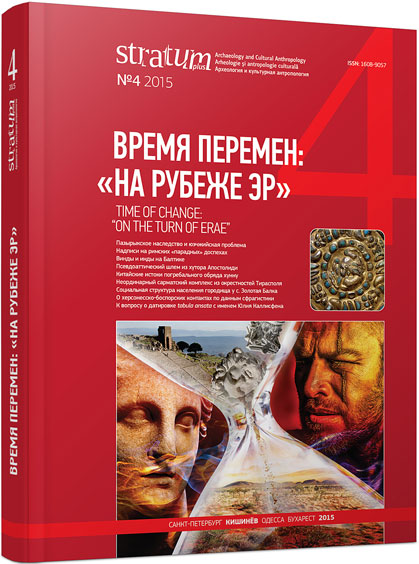Китайские истоки погребального обряда хунну
Chinese Origins of Xiongnu Funerary Rite
Author(s): Natalia A. SutiaginaSubject(s): History, Archaeology, Social history, Ancient World
Published by: Издательский дом Stratum, Университет «Высшая антропологическая школа»
Keywords: Central Asia; Xiongnu; the Warring States period — Western Han Dynasty; the State of Chu; funerary constructions
Summary/Abstract: The article presents the results of a comparative analysis of the Xiongnu and Chinese tombs from the Warring States period up to the Western Han Dynasty. There is obvious divergence in size of external appearance of the tombs, constructive features of the burial pit and wooden chamber within the elite Xiongnu tombs. When compared with Chinese tombs of this period, it turned out that even the largest Xiongnu tombs are comparable to the Chinese high aristocratic ones only by size of the mound. At the same time, the internal structure of the burial pit and the wooden chamber can be compared with lower class tombs of Chinese officials. Among the ordinary graves we can distinguish a group of burials, which can be linked to the Chinese tradition, namely in the construction of log chamber and coffin. The closest analogies for the Xiongnu terrace tombs and ordinary burials can be found in the central and southern provinces of modern China — the territory of the State of Chu.
Journal: Stratum plus. Археология и культурная антропология
- Issue Year: 2015
- Issue No: 4
- Page Range: 57-71
- Page Count: 15
- Language: Russian
- Content File-PDF

